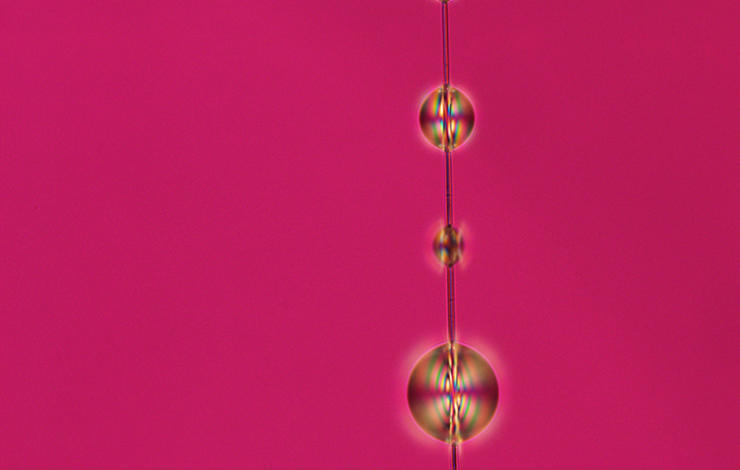27-01-2016

Teams of CENIMAT/i3N – FCT NOVA research centre and Jozef Stefan Institute the University of Ljubljana in Slovenia, led by Prof. H. Godinho and Prof. S. Zumer, use liquid crystal droplets to probe the surface properties of spider webs and micro cellulosic filaments.
Micro natural filaments such as silk which constitutes the spider webs or the cellulose microfibers, can be found in our daily lives. Determination of the morphology of the microfilaments is essential to the understanding of their structural properties, biological functions and mechanical performance.
Liquid crystals (LCs) are essentially known to have revolutionized the technology of displays; the most known applications for this material are flat screens that can be found, for instance, in televisions and mobile phones. The LCs have unique features including high birefringence combined with an easy reorientation of their anisometric molecules, by action of external fields.
This work demonstrated that liquid crystal droplets deposited on spider webs as well as on cellulosic microfibers can act as an extremely accurate sensor revealing the filaments surface characteristics. By combining experiments and numerical modeling, different types of fibers were identified, through the filament to liquid crystal droplet interaction, including the chirality of the fibers. The simple but extremely sensitive method developed can be used to determine the surface properties of micro-objects, opening the way to a precise characterization and development of new sensors accessible and cost-effective.
The results were published in the prestigious magazine Proceedings of the National Academy of Sciences of the United States of America (PNAS).
More information at:
Proceedings of the National Academy of Sciences of the United States of America